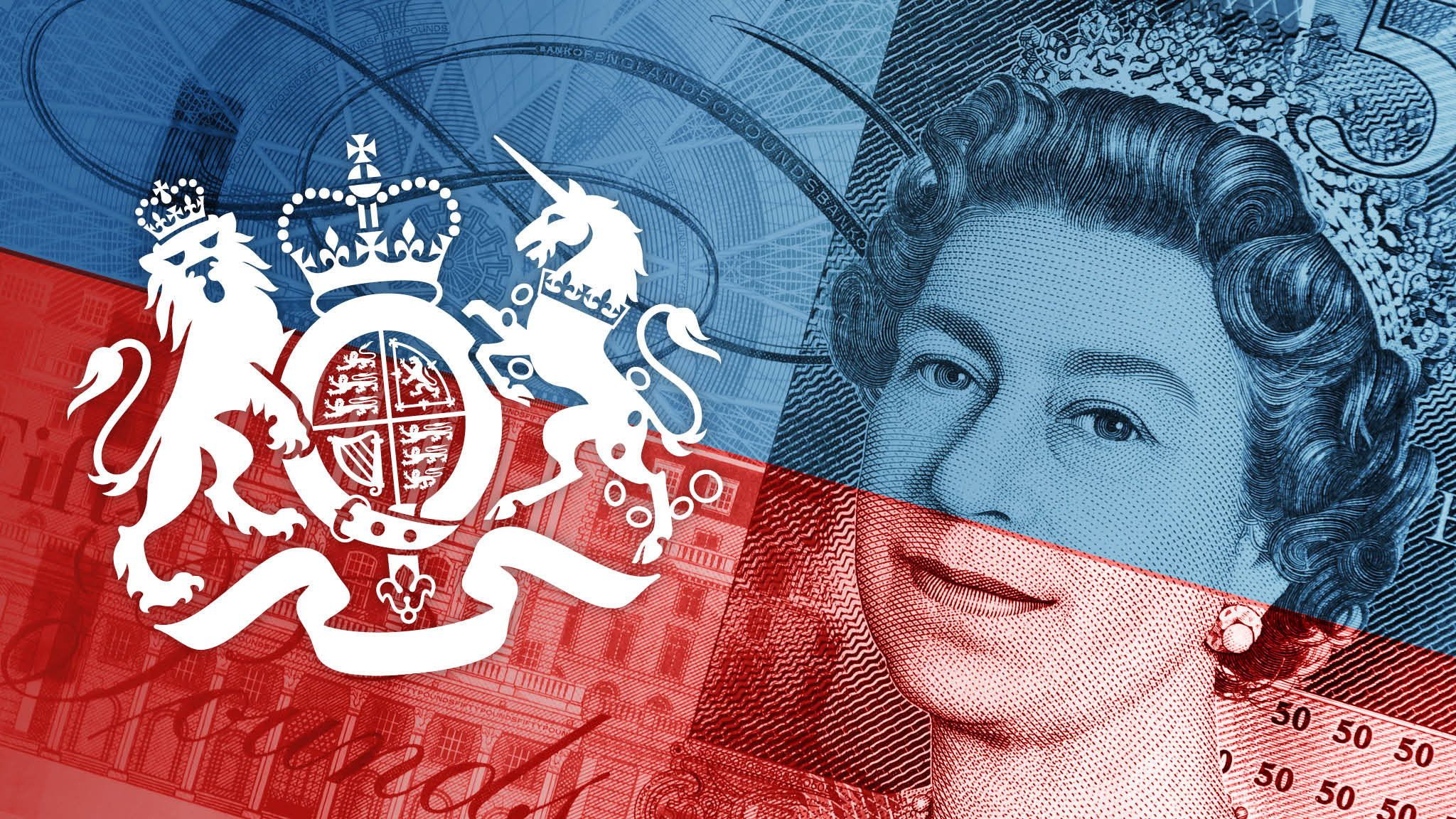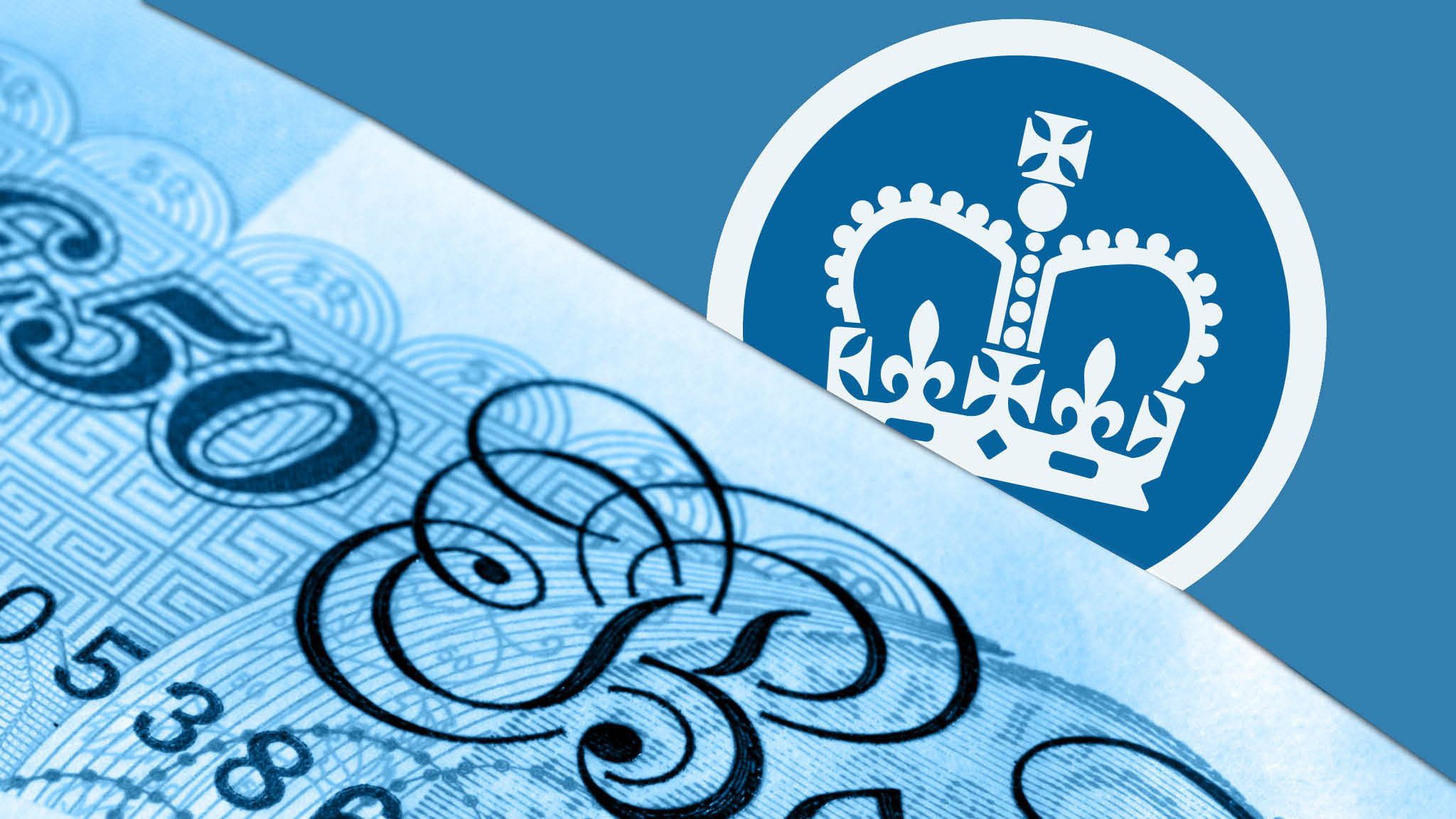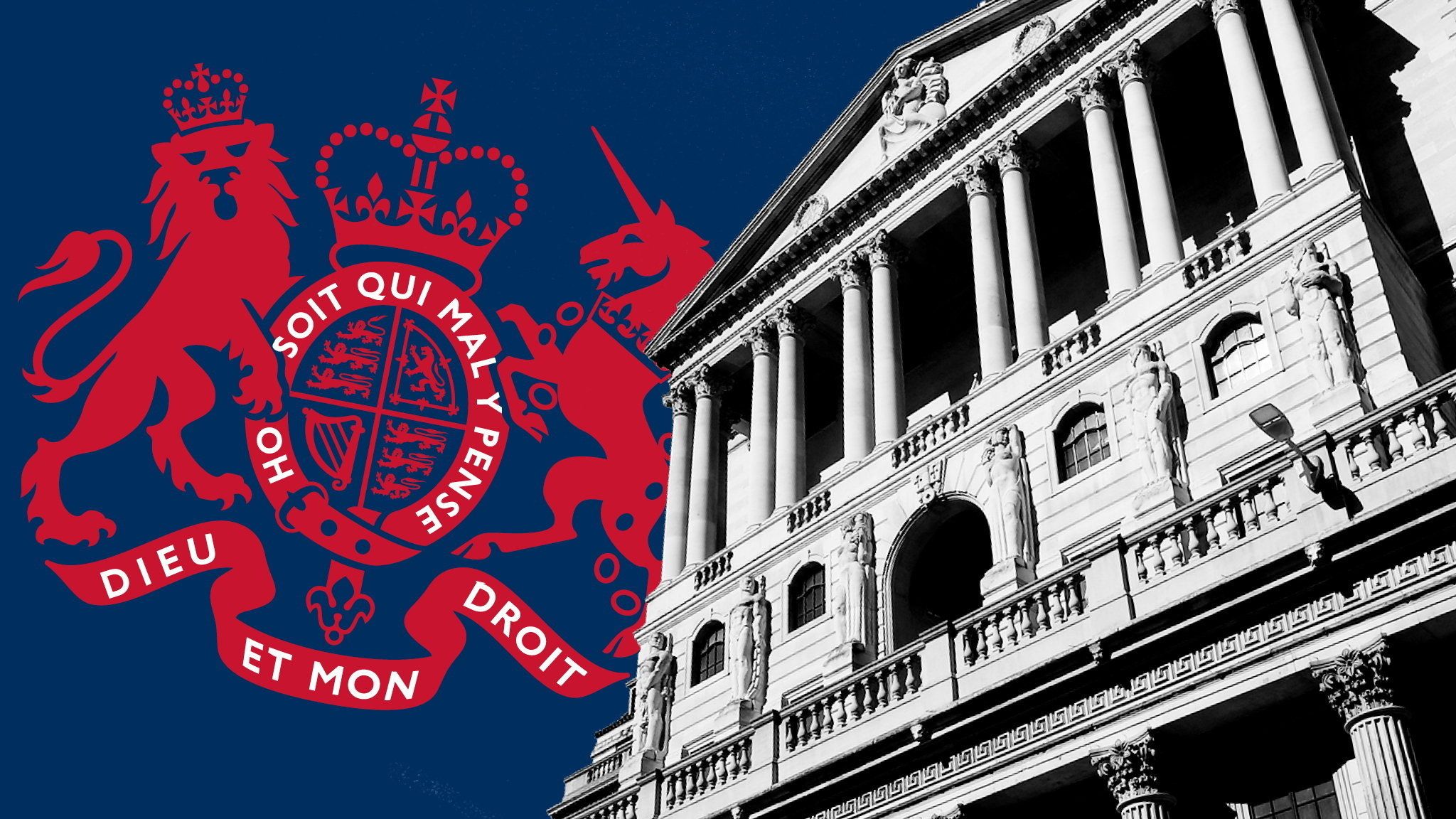Guide to bonds and family wealth planning
How bonds' structure and tax advantages can help clients pass on wealth


Investment bonds can be a useful tool in planning for one's long-term financial future, and also for passing on wealth to future generations.
They are tax efficient in terms of capital gain and dividend income and one can also transfer them to other family members without a tax charge, so long as no money changes hands.
They can be put in trust also, and can last a long time, if the investor chooses to do so, they also enjoy gross roll-up.
This guide, sponsored by Quilter, looks at some of the dimensions of bonds, and how they can operate in a family wealth planning context.
What is an onshore/offshore bond?
Treasury changes over the years to dividend allowance and capital gains tax exemptions is said to be making more investors view investment bonds as tax-efficient vehicles that will feature as very useful in family wealth conversations.
With these types of investment bonds you pay a lump sum to a life insurance company.
They invest the money for you, usually in a range of funds, until you either cash the bond in or die.
They are single-premium whole-of-life policies and will only end when a specific event happens, such as maturity, death of the life/lives assured, or earlier encashment/surrender.
The money invested is split proportionately among a number of identical policies, often referred to as segments or clusters.
If you live abroad, you’d need to take tax advice in that tax territory.
Liz Hardie, wealth technical specialist at Canada Life, explains this feature is unique to bonds and one investment bond is usually made up of a series of individual policies.
She says: “Each policy is identical but can be dealt with individually, providing flexibility for administration and tax planning.
“The policyholder (or investor) is the person or entity whose money is being invested. They are the legal owner of the bond initially, but ownership can be changed at any time by deed of assignment or trust. A policyholder can be one or more individuals, a limited company, or trustees.”
Bonds can be set up as capital redemption or on life assured basis:
- Capital redemption means that there is no life assured and the bond will end on maturity (usually after 99 years) or on earlier encashment/surrender.
- Life assured basis means that a person’s life is covered by the insurance element. The bond will end on death of the life/lives insured or on earlier encashment/surrender.
The life cover can be set up on single life or joint life – first death or last to die basis.
And although referred to as ‘joint’ most bonds can have more than two lives insured. Importantly, the life assured does not have to be the same person as the investor, and if not, they have no ownership rights.
They are simply there to keep the bond alive.
Where an offshore bond is an insurance policy provided by a non-UK insurance company typically based in an international jurisdiction, onshore bonds are issued by UK-based providers.
There are some other differences, such as charges may be higher for offshore bonds, and they tend to have more funds/portfolios available, but the main difference is the tax treatment of the underlying funds.
For onshore bonds, the underlying funds are subject to corporation tax.
Policyholder taxation legislation applies a special rate of corporation tax to ‘life funds‘ and this is linked to the basic rate of income tax.
The basic rate is remaining at 20 per cent, as confirmed in the spring Budget 2023, so life funds will not be affected by the rise in corporation tax from the new tax year. This represents corporation tax on the underlying fund and is not a direct tax paid by the investor.
The investor receives a non-refundable tax credit equivalent to the basic rate of income tax for the tax deemed to have been suffered on the fund.
But in reality, Hardie says, there is a mix of assets held within a fund, all taxed differently.
Both sets of customers are likely to want to diversify their assets.
For example, dividend income from equities is not taxed and capital gains are taxed at 20 per cent, so the actual tax paid on the fund is likely to be less than 20 per cent.
Offshore bond underlying funds are not taxed, except for a small amount of withholding tax on dividends from non-UK equity funds. This means that the fund will grow virtually free of tax, which is known as gross roll-up.
Both onshore and offshore investment bonds are generally used for similar purposes, including inheritance tax planning and as part of a holistic portfolio of wrappers.
Rachael Griffin, tax and financial planning expert at Quilter, adds: “Onshore bonds benefit from the Financial Services Compensation Scheme and may form part of an integrated platform, while offshore bonds are sold as portable and may benefit from no VAT on DFM fees in some jurisdictions.”
But she notes that some people may be wary of offshore bonds due to negative press around offshore tax havens.
Both types of bonds also provide the ability to withdraw up to 5 per cent of the contributions each year without being immediately liable to tax, explains Chris Hudson, retail advised managing director at Standard Life.
In for the long haul
Both onshore and offshore bonds are seen as medium to long-term non-income producing investments.
According to Graeme Robb, senior technical manager at M&G Wealth, non-income producing bond investments can appeal to those investors, perhaps higher or additional rate taxpayers, who want to ‘turn off the income tap’ on their investments.
“Why? Because income being produced might not be needed currently and could be triggering income tax charges. With a bond, income tax is only payable when a gain ‘event’ occurs,” Robb adds.
Hudson agrees. He says offshore bonds are suitable for high-net-worth customers seeking an opportunity to save capital tax efficiently, take tax-deferred income, or achieve a balance of both.
This is because they appreciate the tax control offered by an offshore bond and are likely to have already contributed the maximum to other product wrappers such as a pension plan or Isa.
Hudson adds: “Onshore bond customers are seeking to manage money in a tax-efficient way while increasing the value of their investment and enjoying the opportunity to tax-deferred withdrawals on a regular or ad hoc basis.
“Both sets of customers are likely to want to diversify their assets and many may be seeking a wealth transfer solution by wrapping their bond in a trust. Customers should be prepared to invest for a minimum of five years and to risk getting back less than they paid in.”
With both types of bonds there’s no ongoing reporting requirement to HMRC unless there’s a tax event.
Hardie says bonds make "great bedfellows" with trusts and for those who do not want to complete tax returns annually.
“[With both types of bonds] there’s no ongoing reporting requirement to HMRC unless there’s a tax event.”
As Hardie explains further, onshore bonds are suitable for UK residents who will remain living in the UK throughout the investment term.
They are basic rate taxpayers so there is little or no tax to pay when a chargeable event gains (CEG) arises. Plus, they will want to deal with a UK provider, governed by UK regulations and be covered by the FSCS.
Additionally, offshore may be better for those who want to invest for the longer term to benefit from gross roll-up.
Hardie says: “Maybe you want to invest in a low tax jurisdiction, such as Isle of Man, Ireland or the Channel Islands. You’d like to choose from more funds, direct or portfolios and perhaps use a DFM. Or you want to hold your money in different currency denominations such as euros or USD.
“You won’t be so concerned about the UK FSCS protection, though there may be investor protection in the offshore jurisdiction. You could be non-resident for UK tax purposes, and there may not be UK tax to pay when you withdraw money from the bond.
"Of course, if you live abroad, you’d need to take tax advice in that tax territory to see if there's any taxation considerations of holding a bond.
“Or you could be a higher or additional rate taxpayer during the investment term, either becoming a basic/lower rate taxpayer yourself or gifting some or all of the bond to someone who is, to set personal tax allowances against a CEG arising when a bond withdrawal causes a tax event.”



How are onshore/offshore bonds taxed?
Onshore and offshore bond gains are taxed under the same UK tax rules.
These rules are called the chargeable event rules with gains being subject to income tax, but not capital gains tax.
When a chargeable event occurs, a calculation is done to establish if there is a chargeable event gain (CEG).
No personal tax liability arises until a chargeable event occurs and a gain arises on that event.
But just because a chargeable event has occurred, that does not necessarily mean a gain has arisen.
Part surrender
As Graeme Robb, senior technical manager at M&G Wealth, explains further, a part surrender will trigger a CEG if it exceeds a certain limit.
Part surrenders of up to 5 per cent of total premiums paid can be taken without any immediate tax charge. Withdrawals are tax-deferred and not tax-free.
Where there has been a part surrender, a calculation is made at the end of the insurance yea to see whether a gain has arisen and if so its amount.
An 'insurance year' begins on the day a policy is taken out and on the same date in subsequent years. It ends on the day before the anniversary of the start date and each subsequent year.
Robb says this part surrender rule is very popular with those investors looking for regular withdrawals from their bond to supplement their income, for example.
“Any 5 per cent allowance not used in an insurance year can be carried forward for use in subsequent years,” he adds.
“An investor can therefore withdraw 5 per cent of a single premium investment each year for 20 years without a chargeable event occurring. Or, 4 per cent for 25 years. A part surrender will however trigger a gain if it exceeds the 5 per cent rule.
“If the investor dies and they are the last life assured the bond pays out then the death will trigger a chargeable event. Note, however, that a bond will not always pay out when the investor dies.”
Any 5 per cent allowance not used in an insurance year can be carried forward for use in subsequent years.
Mark Lambert, head of onshore bond distribution at HSBC Life, says gains not covered by the 5 per cent allowance are subject to top-slicing relief, which can reduce the tax payable where the gain results in a tax band (or bands) being crossed.
IHT applies as normal, but many bonds will be subject to trust arrangements that can complicate their treatment.
Robb says: “Professional advice can be taken to ascertain the tax situation if the bond is to be fully encashed, as the investor might have scope to encash the bond in a particular tax year which is more favourable in tax payable terms than another tax year.”
Liz Hardie, wealth technical specialist – tax, trusts and estate planning at Canada Life, says CEGs are taxed as savings income within the income tax calculation and can be set against a client’s personal allowance, starting rate for savings band and personal savings allowance, if available.
Additionally, the tax liability on the balance depends on the size of the CEG and where it sits in relation to other income within the tax calculation.
CEGs on onshore bonds are not liable to basic rate tax as the investor is treated as having paid 20 per cent tax on the gain because the underlying insurance fund is taxed.
Underlying funds are subject to 20 per cent tax on interest and capital gains within the life company. Dividends bear no tax at life fund level.
Offshore bonds enjoy gross roll-up, which impose no tax on the income and gains of the underlying funds. There is therefore no 20 per cent tax credit.
Hardie adds: “Top slicing relief might be available depending on how long the bond has been in force, and if the CEG pushes the client into higher or additional rate band. ”
Top slicing is a relief given as a reduction in the income tax calculation, and it is used to spread the gain over the period the bond is held so an individual does not get fully taxed in the year the CEG arises.
Broadly speaking, gains arising on surrender or death are taxable as savings income.
As Hardie explains, it is the full amount of the CEG, not the slice, that is added to the client’s other income to assess the impact on personal allowance. This is lost by £1 for every £2 where adjusted net income (ANI) is above £100,000 or the personal savings allowance (if CEG pushes client from basic to higher rate band, they’ll get £500 rather than £1,000).
And the full amount of the CEG is used to assess the income threshold for child benefit tax charge as well as the income threshold for paying back student loans.
For offshore bonds, underlying funds subject within the life company are generally free of tax on income (other than withholding tax) and gains.
Lambert adds: “For the policyholder, broadly speaking, gains arising on surrender or death are taxable as savings income. This means that the personal allowance, personal savings allowance and 0 per cent savings rate band are all potentially available to reduce the tax charge.
“And top slicing relief can be deployed to determine whether, and if so to what extent, higher or additional rate tax is payable on the gain.”
Gains on both types of bond are treated as savings income, however for onshore bonds basic rate taxpayers would have no further tax to pay.
Chris Hudson, retail advised managing director at Standard Life, says offshore bond gains can be set against a client’s personal allowance and other savings allowances where available.
The investor might have scope to encash the bond in a particular tax year which is more favourable.
Additionally, top slicing relief can be used to potentially mitigate the gain if it pushes a client into a higher tax band.
Bonds can also provide other benefits such as tax-free fund/portfolio switches, and tax-efficient withdrawals. Five per cent of the amount invested can be withdrawn tax deferred.
Hardie says these withdrawals do not cause an immediate income tax liability and do not interfere with tax allowances or tax credits.
She adds: "The 5 per cent allowance runs for 20 years from the policy year an investment is made and is cumulative for future years. So, you can supplement your income by taking capital withdrawals within the 5 per cent tax deferred allowance, without an immediate liability to tax.
"You can also carry out IHT or intergenerational planning by gifting some or all of the individual policies of the bond to another person or into trust, without triggering a tax event on the bond for income tax or CGT purposes."



More investors are looking to bonds for tax-efficient investments.
More investors are looking to bonds for tax-efficient investments.

Chancellor of the exchequer Jeremy Hunt departs Downing Street with his Autumn Statement, November 17 2022.
Chancellor of the exchequer Jeremy Hunt departs Downing Street with his Autumn Statement, November 17 2022.

Bonds can help to protect an estate from IHT through the use of gift trusts.
Bonds can help to protect an estate from IHT through the use of gift trusts.
Are bonds back in fashion?
An increasing number of financial planners are looking to use the benefits of investment bonds with clients, particularly as an effective way of drawing income in retirement alongside a pension, Isa and unwrapped investment, investment experts have said.
According to Chris Hudson, retail advised managing director at Standard Life, holding investments across multiple tax wrappers can provide greater income flexibility and enable an investor to use the full range of tax allowances.
This come as rules to capital gains tax are changing. The CGT exemption decreased from £12,300 to £6,150 this month (April 2023), and is set to decrease to £3,000 in April 2024.
Hudson adds: “This had led financial planners and investors to review their current unwrapped investments, which are liable to CGT, and consider moving those across to an investment bond – taking into account the potential tax implications.
“Offshore bonds have also widened their investment offering.”
Gaining popularity
While in the past Financial Conduct Authority regulations and tax legislation may have contributed to the decline in bond popularity – for example, the Retail Distribution Review meant that commission could not be paid to advisers on new bonds, so they were less attractive – the new consumer duty is putting the focus firmly on the needs of clients and requires advisers to look at more holistic financial planning.
Saying that, for some investors, bonds have never been out of fashion.
Rachael Griffin, tax and financial planning expert at Quilter, says with the changes to CGT annual allowances and dividend allowances, there has been a renewed focus on utilising all available tax wrappers. More people are also falling into the IHT net and seeking ways to mitigate it.
Griffin adds: "Investment bonds may not have necessarily fallen out of favour, but more focus was placed on holding assets within a general investment account. Holistic planning is now the key."
Investors are now viewing bonds as more tax-efficient vehicles.
Liz Hardie, wealth technical specialist – tax, trusts and estate planning at Canada Life, says investment bonds have always been great investment vehicles for the majority of trusts.
They are not income producing so trustees do not have the administration and tax reporting burden that income from investing in collectives/GIAs brings.
“So, unless trustees have a genuine need to produce income for a beneficiary, such as for a life interest trust, then they should always consider investment bonds," Hardie adds.
Tax changes considerations
Tax-wise, for a while collectives and GIA-type investments were the most tax efficient for the majority of personal investors.
Investors could use the generous dividend allowance and capital gains tax exemption against dividend income and gains from collectives.
So, many investors had little or no tax to pay as their income and gains were covered by allowances and exemptions.
Hardie adds: “The Autumn Statement 2022 changes to the dividend allowance and CGT exemption... has a big impact, especially considering the dividend allowance was £5,000 when it first came into effect in April 2016, and from the tax year 2024-25 it will be £500. It’s effectively reduced to a tenth of the amount in less than 10 years.
“These reductions mean that dividend income and gains are less likely to be covered by exemptions.”
According to Hardie, the changes are particularly detrimental to discretionary trusts.
This is because the CGT exemption for trusts is half of an individual’s CGT exemption. Not only that, but if the settlor created more than one trust, the CGT exemption is divided between them to a minimum of 5 trusts. In 2024-25 tax year that would only be a £300 exemption per trust.
Hardie says: “Trusts currently have the trust standard rate band of £1,000 to set against trust income. Again, this is divided between the trusts that the settlor created to a minimum of five trusts, so could be as little as £200 for these trusts. It was announced in the spring Budget 2023 that this will be abolished from tax year 2024-25.
“More investors are going to pay more tax on this type of investment so investors are now viewing bonds as more tax-efficient vehicles.”
Benefits of bonds
Bonds can be used for a wide variety of things, as outlined below by Graeme Robb, senior technical manager at M&G Wealth:
- Access funds not possible in an OEIC. For example, funds offering the prospect of low volatility and smoothed returns.
- Consider bonds in trust arrangements for those investors engaged in IHT and estate planning.
- Time frame – investors should be looking to invest for five to 10 years or more.
- Suitable for investors who do not require an income but may take withdrawals eg to fund future Isa subscriptions.
- Grandparent school and university fees planning where segments within the bond, probably offshore, can be subsequently assigned/appointed to grandchildren who are then taxable on encashments. These grandchildren just like adults have a personal allowance and savings allowances.
- Higher and additional rate taxpayers who wish to shelter their investment income from the higher rates of tax that apply outside the insurance bond wrapper, with a view to encashing when they are in a lower tax bracket.
- Investors who do not require an income but would like access to the tax deferred allowance regime offered by bonds. With a single premium investment, part surrenders of up to 5 per cent of the premium can be taken annually without any immediate tax charge. Withdrawals are tax deferred and not tax free.
As part of a holistic financial plan, bonds can be used as a savings vehicle for capital growth, to supplement income or for IHT and intergenerational planning.
When it comes to pensions, contributions can extend the basic rate band and reduce the amount of adjusted net income (ANI) by the gross amount of the contribution.
Hardie says that extending the basic rate band can bring higher rate taxpayers back into the basic rate tax band so top slicing relief is available where the CEG has pushed the taxpayer into the higher or additional rate tax band.
For a significant portion of advisers, bonds have never gone out of fashion.
She adds: “This can also increase the personal savings allowance from £500 (for higher rate taxpayers) to £1,000 (for basic rate taxpayers).
“Where a CEG causes someone to lose personal allowance by increasing their ANI above £100,000, a pension contribution can reduce income to below this level and restore the personal allowance.”
Bonds can also help to protect an estate from IHT through the use of these main types of trusts that are associated with bonds:
- Gift trusts: where the trust settlors give the bond to the trustees for the eventual distribution to the beneficiaries. The settlors maintain control of the day-to-day investments held within the bond, but have given away the assets from the moment the trust become live.
- Discounted gift trust: the settlors are undertaking this arrangement to enable them to achieve an immediate reduction in their estate for IHT purposes. In addition, retaining access to a regular stream of capital payments that can improve cash flow during their lifetime.
Bonds can also be used by limited companies looking for an investment vehicle to hold excess profits. It is also possible to gift some or all of the individual policies of the bond to another person or into trust, without triggering a tax event on the bond.
Mark Lambert, head of onshore bond distribution at HSBC Life, says investment bonds are a really flexible product that have the ability to evolve and remain relevant as an investor's circumstances change.
Lambert adds: "Today, more so than ever, they offer a tax-effective platform for investment growth (enhanced by the reduced CGT and dividend allowances), the provision of a regular income that is tax deferred through the use of the 5 per cent allowance, through to being used in conjunction with trusts to provide an excellent platform for intergenerational wealth transfer."
Along the way, Lambert says there is also the option to assign investment bond policy segments to spouses, partners and adult children helping those individuals with their financial needs, again in a tax-effective manner.
He adds: “Therefore, for a significant portion of advisers, bonds have never gone out of fashion. For more advisers and their clients with frozen allowances and caps on pension savings, there is an increasing number of people with lump sums to invest where the tax regime in relation to bonds makes more sense.”
How do bonds fit in with family wealth planning?
Bonds can be assigned into trust or to someone else without triggering a chargeable event provided consideration – cash or other remuneration – does not change hands.
This means that a higher or additional rate taxpayer can assign the bond to their spouse, partner or children as a gift, without triggering a tax charge.
This is especially beneficial if the recipient is a basic rate taxpayer or a non-earner.
Liz Hardie, wealth technical specialist – tax, trusts and estate planning at Canada Life, explains that bonds with a life insurance element are disregarded from the care capital test.
“But you have to be careful of investing solely for this purpose, or gifting when you might still need the investment, as it can be viewed as deliberate deprivation of assets by the local health authority,” Hardie adds.
Assigning assets in the family
Assigning a bond to a family member could help to reduce the tax payable when it comes to withdrawing money from the bond or surrendering the policy, if the assignee pays a lower rate of tax than the assignor.
Chris Hudson, retail advised managing director at Standard Life, says this is particularly relevant for offshore bonds if the bond can be assigned to someone who is a non-taxpayer, as the bond has already benefited from gross roll-up of gains and income in the fund.
Also, being a non-income-producing investment means that bonds can offer a relatively simple investment asset for trustees of family trusts such as discretionary will trusts and discretionary trusts established under deeds of variation,” says Graeme Robb, senior technical manager at M&G Wealth.
“Also don’t forget that an offshore capital redemption bond can last for up to 99 years, which might appeal to trustees of trusts continuing through the generations,” he adds.
Consider your tax position, now and in the future, and your exit strategy for getting money out of the bond.
When passing on wealth, Hardie says the settlor should consider if the investment is for growth or whether withdrawals are required.
If so, what is the level of withdrawal required and relative chargeable event position when withdrawals are taken?
Additionally, it is important to consider the investment horizon versus relative returns and the tax payable over that timescale.
She adds: “Would an offshore bond benefitting from gross roll-up outweigh returns from an onshore bond if you factor in a tax liability on encashment, or would the returns on an onshore bond be on a par/more?
“Consider your tax position, now and in the future, and your exit strategy for getting money out of the bond, if your tax position is likely to change. Will your income and tax position change between investing and CEG arising?”
Also, the settlor needs to think about family dynamics and who will ultimately benefit from this money. Is it important to have control over who benefits and when?
Hardie says: “For generational planning, look at who will eventually encash the bond. Is their tax rate different to yours? Who will be taxed on CEGs and at what rate?
“Can personal savings allowance and starting rate for savings band be set against them? Can appointments/distributions be made to children/ beneficiaries? Consider this and the tax they would pay on the gain.”
Staying flexible
Flexibility is very important when it comes to family wealth transfer, according to Rachael Griffin, tax and financial planning expert at Quilter.
Griffin says: “Investment bonds can be placed into trusts at a later date, using different trust options which serve different purposes. Holding jointly or the assignment of segments of the bond to an adult child to encash at their personal tax rate, all can prove useful.”
It is all around the control and timing of the gift that they want to make.
It is also important for the settlor to factor in the kind of lifestyle they want to have after passing on their wealth to family.
They should consider whether they have enough assets to pursue the lifestyle that they want to live and that they have sufficient assets to meet any future care needs.
“After that, it is all around the control and timing of the gift that they want to make,” says Mark Lambert, head of onshore bond distribution at HSBC Life.
By placing a bond investment in a gift trust, the settlor maintains control of the day-to-day investments held within the bond, but has given away the assets from the moment the trust become live.
With a loan trust, the settlor retains access to the loaned capital within the bond and all future growth is outside of their estate from day one.
Lambert explains that with this arrangement there is the option to gift the loan at a later date should the settlor get to a point where they decide that they will no longer require the original capital.
A discounted gift trust is used for those who want to undertake IHT planning but also need an income. It permits the gifting of a lump sum into a trust while retaining a lifelong income from that money, with the objective of reducing any potential IHT payable on death. Retaining access to a regular stream of capital payments can improve cash flow during the individual's lifetime.
He adds: “All of these trust arrangements give the ability for the settlors to provide fixed details of beneficiaries where an absolute trust is used and to provide their trustees with the flexibility to carry out their wishes where a discretionary trust is used, which enables policy proceeds to be made available to multiple classes of beneficiaries.”
Who has access?
Control and access are also very important in family wealth discussions.
It is very simple to make an outright lifetime gift – a potentially exempt transfer for IHT purposes – but Robb questions if that is appropriate.
The gift is simply passing the gifted property into the recipient’s estate, which might cause IHT issues for the recipient at a later date.
Robb says: “Remember that the recipient might not be particularly young and might not be in the best of health. Also, is the donor content with the inflexibility with not being able to change their mind should circumstances alter?”
For control purposes, he notes, clients might therefore want the flexibility offered by a discretionary trust where there are no beneficiaries with a ‘vested’ interest but instead just potential beneficiaries.
Remember that the recipient might not be particularly young and might not be in the best of health.
Robb says: “It’s up to the trustees to decide which potential beneficiaries are to become actual beneficiaries, when that might happen and how much those chosen beneficiaries are to receive.
“The trustees are clearly in control and so the settlor might wish to draw up a letter of wishes to guide the trustees.”
When it comes to access, if IHT is an issue, then investors need to be mindful of the IHT anti-avoidance gift with reservation rule where there is no IHT savings unless the individual is excluded from benefitting, Robb says.
Bonds can help with this as they can simply and tax efficiently be gifted between individuals.
Also, they can be set up in such a way that the bond may be able to continue after the investor dies. And they can be held in a bond in trust arrangement offering control, flexibility and access.
Other points to consider:
- Does the individual need regular payments from the trust? If so, consider an insurance company discounted gift trust. If regular payments are not needed…
- Does the individual need access to original capital? If so, consider an insurance company loan trust. If access to original capital is not needed, then…
- Can the individual give up access to all capital? If so, consider an insurance company gift trust.
ima.jacksonobot@ft.com




